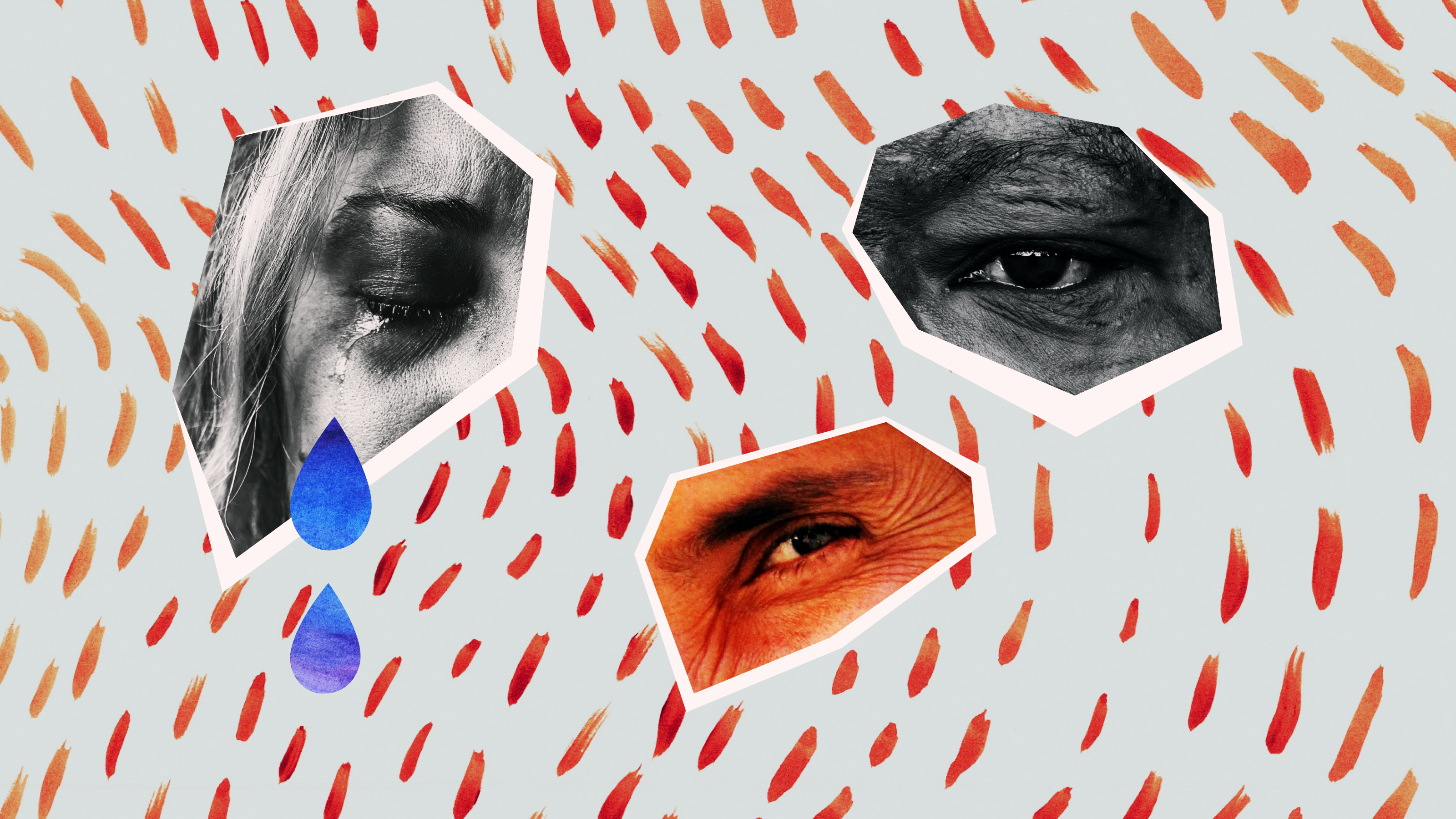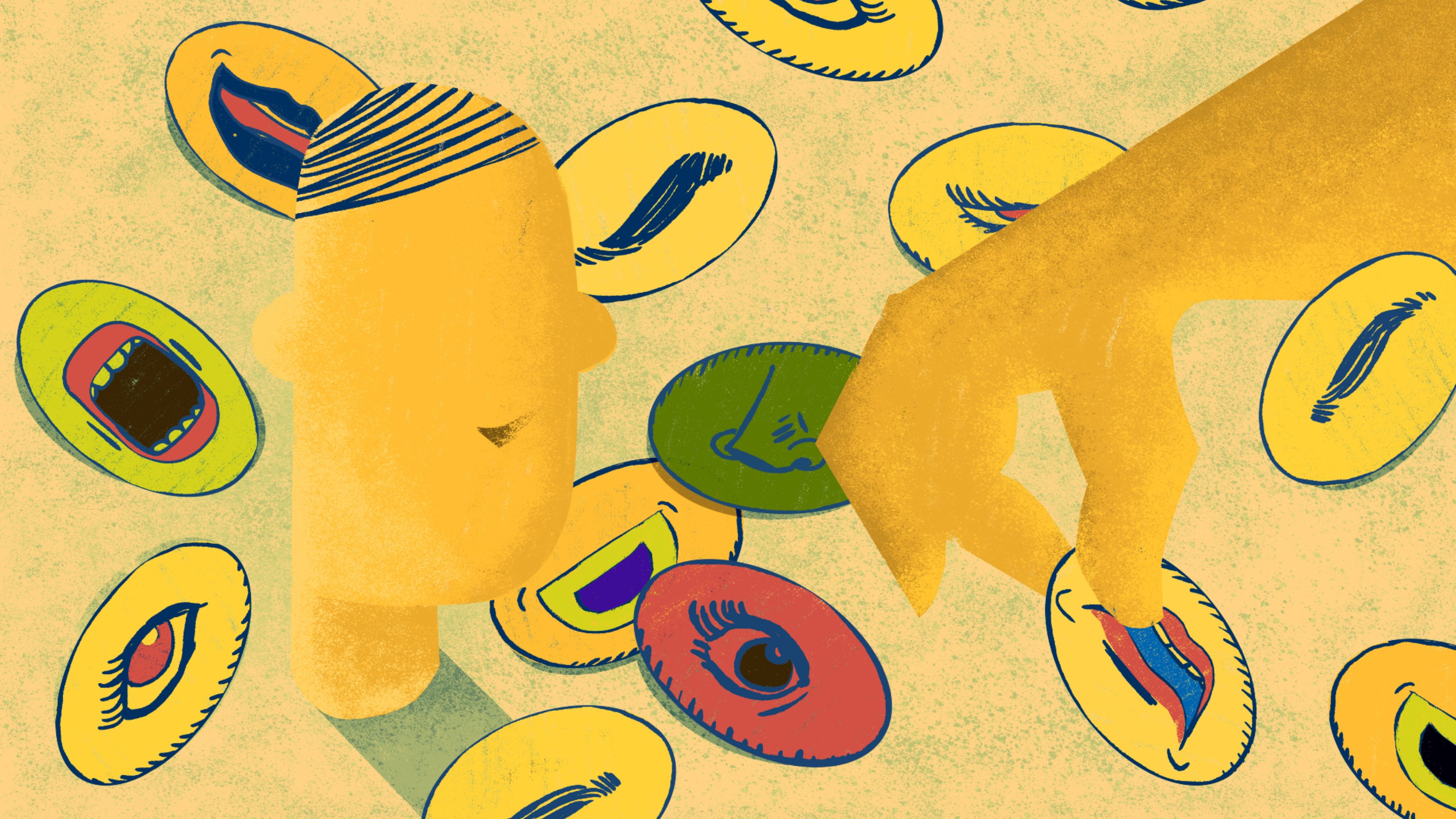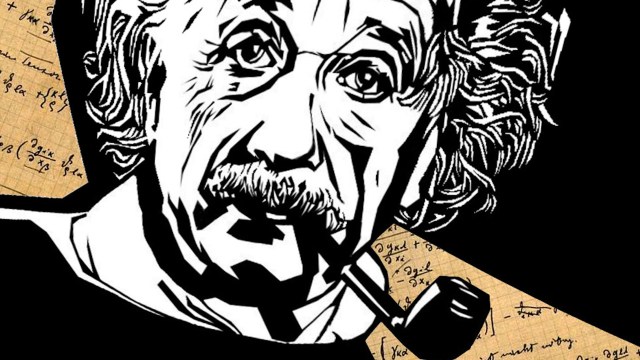How a better understanding of “emotional energy” can unlock your potential

- We try to solve problems by focusing on situations. We should focus on our emotional energy instead.
- Ask yourself: If all paths guarantee some emotional pain, which pain will empower me?
- Rather than outsourcing their emotional work to others, leaders should learn to build emotional resistance and self-trust.
Emotions are powerful — so powerful that they can feel like forces acting upon us. Ancient mythologies are replete with tales of gods toying with human passions, driving their mortal playthings toward often tragic fates. Even modern stories still cast emotions as tiny people pulling levers in our heads or devils whispering enticing evils on our shoulders.
Of course, today we understand that emotions are the expression of electrochemical signals in our brains. However, according to neuropsychologist Julia DiGangi, we seldom appreciate the implications of this fact. Rather than being controlled by emotional energy, we can harness it to catalyze change and improve the ways we experience our lives, lead our teams, and connect with others.
DiGangi recently joined Big Think for a chat about her new book, Energy Rising. During the conversation*, we discussed how emotions exist in the brain; why we often misunderstand emotions, especially negative ones like uncertainty; and how we can better integrate our emotions with our thinking to alter patterns of toxic behavior.
Big Think: Many self-help books spout “woo” about opening your chakra gates or honing your aura. But that’s not the kind of energy you’re talking about, is it?
DiGangi: [Laughs.] No. I am a neuropsychologist, which means I’m a clinical psychologist with specialized expertise in the brain. Most of my research involves fMRIs and EEGs — lots of images of emotions as expressed in the brain.
Your emotions are an energy that you possess inside of your body. Not the metaphysical kind but quite literally an electrical energy.
Now, we could list probably a thousand synonyms for angry alone, but the circuits that give rise to those feelings, they’re not that big. You can really divide your feelings between those that feel good and those that feel bad. The way I refer to them is “emotional power” and “emotional pain” [respectively].
Big Think: Why is it important for people to understand their emotions as energy?
DiGangi: One of the biggest premises of my book is that people almost always try to fix their issues by focusing on the situation. Bill is annoying me. My team isn’t working hard enough. The customers aren’t buying enough. This goes on and on.
The focus should be on your emotional energy instead.
That’s a wild shift for people because we have to understand how meaning is mediated by the emotional circuits in our brains. Are you a good leader? Well, how do you feel about it? Does your team respect you? How much attention is enough? How much money is enough? All of these are ultimately mediated by how you feel.
People waste so much energy, effort, and time trying to solve their lives one situation after another. It is wildly more efficient to think about the underlying emotions where you have so much greater authority and influence.
A racing uncertainty
DiGangi: One of the most, if not the most, challenging and painful emotions is uncertainty.
Some interesting experiments have put people in a lab under two conditions. In the first condition, participants were hooked up to electric shock machines and told that they would receive a shock when a countdown reached zero. The second condition was the same except the participants were told they may or may not get shocked. People statistically preferred to be in the condition where they knew they would be electrocuted.
In the real world, where information comes at us hard and fast, we’re constantly trying to convert uncertainty to certainty. We believe that if we can stop feeling uncertain, then we can be safe. This leads to what I call the “overs.” We overwork. We over-communicate. We over-function, overperform, over-appease, and overdo.
But the strongest neuropsychological evidence we have tells us that the more we demand certainty, the more uncertain we feel. That has to be one of the biggest paradoxes in our lives. It sounds so counterintuitive: What’s the opposite of uncertainty if not certainty?
The answer is self-trust. [Self-trust] is knowing when to say enough is enough. It’s knowing that whatever happens, you’re going to do your best, and it’s going to be okay.
There is no experience in life without pain, but we waste so much time trying to figure out the pain-free option.
Big Think: Why do you suppose we have such difficulty learning to work with our emotional pain?
DiGangi: No experience in life is without pain, but we waste so much time trying to figure out the pain-free option. The much simpler and more powerful question to ask is, “In a life that guarantees me pain, which pain is the one that empowers me?”
Physical health is such a good analogy here. If you want to get stronger and you can only lift five pounds, you have to work up to seven. Then nine. Then 15. Similarly, if you want to become more emotionally powerful, you have to build up more “emotional resistance.”
[Suppose] you want to become more expressive. Then you could make a list of 10 things that have emotional resistance for you. Number one on your list may be writing in a journal. Maybe number three is writing emails to a group of friends, number seven is writing Facebook posts, and number 10 is hosting your own podcast.
As you start working up that emotional resistance hierarchy, invariably you will increase the resistance. And it happens quickly, too.
The law of conservation of emotional energy
Big Think: There’s a concept in your book called “the law of conservation of emotional energy.” Why is it so important to understand?
DiGangi: A lot of us try to destroy painful emotional energy. Well, some of us may remember from high school physics that energy cannot be destroyed. But it can be transformed.
So, dysregulation in the brain occurs when there’s a breakdown between the affective (emotional) and cognitive (thinking) systems. However, when you integrate those systems, you move the energy that’s stored in one part of the brain to another. It becomes something new. This is one of the reasons we think talk therapy works.
People love to say that emotions are confusing, but there’s an emotional math to your life. You just have to understand it.

A case study in transforming emotional energy
DiGangi: Can I share a true story from my book?
Big Think: Please.
DiGangi: One day a combat veteran comes to see me. I do a lot of work with trauma and he has PTSD, which is an incredibly debilitating disorder. His trauma happened in the context of a convoy, and so he could no longer drive. He didn’t like to go to public places. He didn’t go to work anymore because he was so irritable and angry. Most excruciatingly, he was alienated from his family. His life had shrunk.
I told him that rather than avoid talking about his fears, we were going to release the trauma by doing the opposite. We would talk about it in great detail. (This treatment, if your readers are interested, is called prolonged exposure.)
This guy was like, “Wait a second. I just told you I haven’t been able to talk about this for 20 years. This is a terrible idea!”
Now obviously, you talk to patients. You do a lot of education, you give them the evidence, and they’re in control of their treatment. Once I laid it all out, he very courageously said he’d give it a shot.
I had him record himself talking about his trauma and then listen to it at home — over and over and over and over again. About 12 weeks into the treatment, he came in, held up his phone, and said, “Doc, I can’t do this anymore.” I asked him what was going on, and he said, “Every time I listen to this recording, I fall asleep. It is so dull.”
His story is such a stunning example of how approaching our pain leads to transformation. Through his willingness to touch his fear and work with it, he transmuted it into an entirely different reality. And because human behavior and emotion exist on a continuum, if this works at the most extreme forms of emotional stress, it’s going to work for the rest of us.

The command-and-control leader
Big Think: What is a “command-and-control” leadership style, and how does it tie into the concepts we’ve discussed?
DiGangi: When you think about any relational problem on the planet, whether it’s your coworker, boss, team, spouse, kids, or even — and I’ll go big here — a conflict between nations, it can be described by two competing neurobiological drives in the brain.
One is the drive for connection. We have a ton of scientific evidence about the psychology of attachment. We understand that people affect each other’s nervous system. Again, not metaphorical. Coworkers can raise or lower our heart rates and blood pressure.
We also have the exact opposite neurobiological drive for independence. You can also call it freedom, choice, or autonomy.
So, we’re trying to navigate these competing drives, and unless we understand what’s happening when other people start to express their own realities, and unless we’re emotionally powerful, we’re going to get triggered by this.
In a work setting, you get commanding. You start to over-check and micromanage. But what you’re really saying is, “I don’t trust myself.” Micromanaging people is another form of control, and we control to get certainty.
From uncertainty to self-trust
Big Think: How can leaders use this knowledge to move past their micromanaging tendencies?
DiGangi: The reason someone tries to control another person’s behavior is not that they’re a bad person. It’s because they’re anxious, stressed, or afraid. That’s when they start to over-communicate, over-engineer, and over-function.
So if the antidote is self-trust, then you need to ask some questions about yourself: What are the ways that you give yourself reasons to doubt yourself? Where do you say you’re going to do something and then don’t? Where are you saying “yes” when you mean “no”? Where are you not speaking up when you want to? Where are you making it the responsibility of other people to set your boundaries?
What I am sure about is that every single thing we want in this lifetime is on the other side of feelings.
Big Think: So, in asking such questions, someone can discover places where they need to choose the more powerful pain?
DiGangi: Absolutely. But if you’re a leader, you cannot outsource the emotional work to your team. You’ve got to do the hard work of coming up with clarity where there is none.
Big Think: Are there any concluding thoughts you’d like to share?
DiGangi: What I am sure about is that every single thing we want in this lifetime is on the other side of feelings. The sensations of frustration, worry, stress, irritation, or anger are not there to torment you. They are there to lead you home. The thing we want more than anything is access to our own power, access to our own energy. The only way we get more powerful is to hold more resistance.
My deepest wish is that people can come into a more clarifying and empowered relationship with their emotional pain.
Big Think: Where can people find you online to learn more?
DiGangi: I’ll be talking about this stuff until pigs fly, so I would love to continue the conversation with anybody who is interested. I’m on social media, so you can find me at “Dr. Julia DiGangi” on LinkedIn, YouTube, Twitter, Facebook, and Instagram.
I hope that if people are interested in this conversation, they’ll pick up Energy Rising, too. Thanks, Big Think!
Big Think: Thank you!
* This conversation has been edited for length and clarity.






